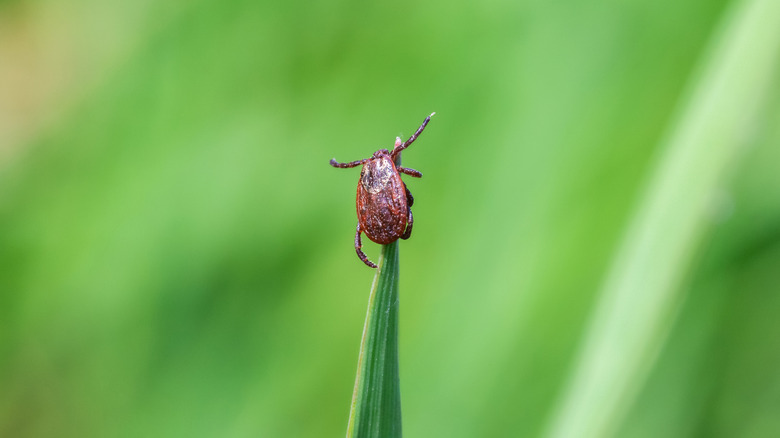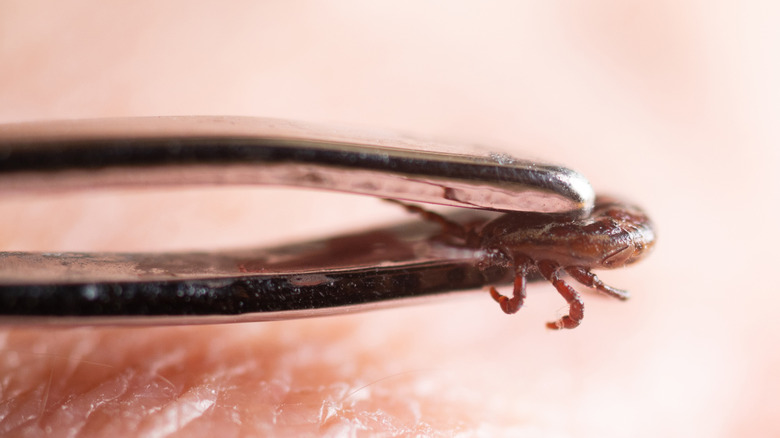Here's What You Should Do After You Remove A Tick
Ticks are a common problem for those who spend time outdoors. This is because there are close to 100 different species of these blood-sucking parasites in the United States. As a result, trying to avoid tick bites is high on the priority list for most outdoor enthusiasts. This is not simply to avoid the unpleasantness of a bit. Over a half dozen tick species found in the U.S. spread diseases. In fact, there are over a dozen dangerous diseases spread by ticks, including Lyme disease, Rocky Mountain spotted fever, and more. So, if you do get a tick on you, getting it off as soon as possible is critical. However, just as essential is knowing what you should do after you properly remove a tick.
Unfortunately, some common tick removal techniques may increase the chance of infection. The safest way is to utilize a tick removal kit or tick key to completely remove the tick, although you can also use household tweezers. To that end, it is a good idea to always carry a tick key when adventuring outdoors so you can quickly and safely remove a tick while still in the field. However, whether at home or in the field, removing the tick is just the first step in tick bite first aid. The tick will need to be properly disposed of so it doesn't bite again and the wound area will need to be properly cleaned.
Dealing with a tick bite step-by-step
If you find a tick on your body, it should be removed as soon as you notice it. If you are using a tick removal tool, follow the instructions provided with the device. If you are using tweezers, start by grabbing the tick as close to your skin as you can. Be sure to maintain a firm grip and pull upwards in a slow, steady motion. It is important not to twist or rapidly jerk the tweezers. Such harsh movements may cause the tick's head or mouth to break off in your skin. If that does happen, try to remove the remaining pieces with tweezers. Any pieces that cannot be easily removed should just be left.
Once the tick is removed, it should be disposed of properly. Do not attempt to crush the tick with your fingers, as that could result in infection entering cuts in your skin from the tick's body fluids. Instead, you should either place the tick in a sealed bag, wrap it with tape, flush it in the toilet, or put it in alcohol. Once that is done, you should thoroughly clean your hands as well as the bite area with alcohol or by washing with soap and water –- or both.
While the CDC does not recommend having ticks tested, they do suggest monitoring your body for rashes, fever, or other signs of infection. If you develop any of these symptoms within a few weeks of the bite, you should contact a doctor. Additionally, if you are unsure of the steps to take with tick removal and bite care or if you should see a doctor, you can utilize the CDC's online Tick Bite Bot tool.

